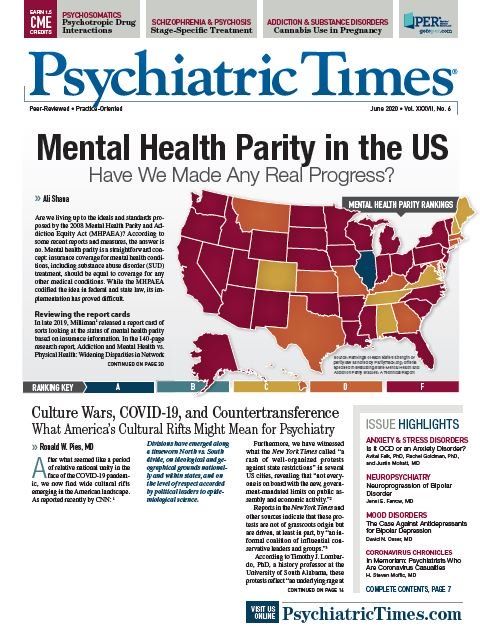
Publication
Article
Psychiatric Times
In Memoriam: Psychiatrists Who Are Coronavirus Casualties
Author(s):
One was a civil rights activist. Another, a book illustrator on the side. A third practiced medicine for over 70 years. All served as mentors. No one loss is less profound. Their families and psychiatry mourn them.
ykordik/AdobeStock

CORONAVIRUS CHRONICLES
President Trump and others have said we are at war with this virus. On May 25th, we honor our soldiers who have fallen while serving. Since once a physician, always a physician, let’s also honor our psychiatrists on this Memorial Day who have fallen from the coronavirus.
We purposedly left out a detailed eulogy about one physician colleague who relates to psychiatry in a different way but should still be remembered for the painful connection—the emergency physician who died by suicide after a bout with the virus. Her story was covered extensively in the public media, and it would be inappropriate and likely a violation of the “Goldwater Rule” to speculate more about her suicide. Still, we mourn her loss.
Of course, we also take a moment to think about the patients, usually inpatients on a psychiatric ward, who we have heard about contacting and dying from the coronavirus. Again, for privacy sake, they are not identified, but they are part of our psychiatric extended family.
Although there may be more victims, here are a few of our colleagues who have lost their lives during this pandemic.
Robert Columbus Lancaster, MD
Dr Lancaster was apparently the first (and oldest) psychiatrist who died from COVID-19. He died at the age of 98 on March 17, 2020, one of two psychiatrists who passed away at an early hotspot of Lambeth House, a retirement community in Uptown New Orleans.
Known as “Dr Bob,” he contributed to psychiatry for over 70 years, including tying psychiatry together with religion and literature. One of his earliest contributions was aiding soldiers returning home after serving in World War II. A late focus was on helping physician colleagues who struggled with substance abuse. At one point, he was president of the Louisiana Psychiatric Association.
In his later years, he turned toward spiritual endeavors, including being a founding member of Luke’s House Free Clinical Medical Ministry in the wake of Hurricane Katrina. Even into his 90s, he volunteered clinic time there.
He also loved to read Shakespeare and other books. That led him to consider Shakespeare to be “the first psychiatrist because he understood the dual nature of humans.”
Charles Rodney Smith, MD
Dr Smith died the day following Dr Lancaster’s death at the age of 92.
Like Dr Lancaster, Dr Smith was also well-known in New Orleans for his many interests. Having studied in his younger years at the Academy of Fine Arts, he later served on the Board of the New Orleans Opera Association. He was connected to many cultural events for which New Orleans is known (and that I loved), including the carnivals and the famous Galatoire’s Restaurant, where he celebrated many special occasions.
Ricardo Castaneda, MD
Born in Guatemala City, Dr Castaneda served on the front lines of psychiatry in private practice before he was infected by the coronavirus, dying on March 25 at the age of 64. Before that, he worked as Director of Inpatient Psychiatry at Bellevue Hospital in Manhattan from 1992-2009.
Perhaps he was best known for his artwork, especially caricatures. He could be seen creating them wherever he was—from concerts or park benches—giving them away freely as gifts. He used his talent to illustrate books on psychiatry and addiction.
During the pandemic, he switched to seeing patients through telemedicine. When he went into the hospital, he apparently took his computer with him in order to continue contact patients. According to his wife, he texted a last message: “I have patients I have to save.” It turned out that he himself was a patient who could not be saved.
Alyce Chenault Gullattee, MD
Dr Gullattee died after testing positive for the coronavirus in early May. She was an esteemed faculty member at Howard University for more than 50 years.
She started medical school at a California school, but after becoming disillusioned by the racial attitudes, transferred to Howard. Unusual for a would-be psychiatrist, her anatomy dissections during a US Public Health summer fellowship were so good that they were recorded for teaching films.
Dr Gullattee was a socially oriented psychiatrist and civil rights activist. She often wore African-inspired attire. She consulted during the Attica prison uprising in 1971, international medical missions, and attendance at a Pan African conference.
Clinically, she specialized in substance abuse, becoming an expert on the cocaine epidemic in the 1980s. She reached out to the most vulnerable, even going to the streets and alleys in Washington, DC despite the risks.
Similarities and differences
All of these psychiatrists had significant artistic interests: Shakespeare, music, art, and fashion. They all involved themselves in their communities in other aspects besides their psychiatric practice.
Although their numbers are small, they represented different cultures, almost at the respective prevalence of their communities: 50% were white, 25% Hispanic-American, and 25% African-American. Let’s hope the overall numbers remain small.
If the reader notices anything in these eulogies that need revision or knows of other psychiatrists who have died from the coronavirus, please let us know, as we want to honor them appropriately. Send information to PTEditor@mmhgroup.com.
This article was originally published on May 24, 2020, and has since been updated. -Ed

2 Commerce Drive
Cranbury, NJ 08512
All rights reserved.




